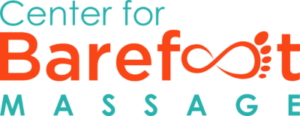Mindfulness in massage is all about being present, focusing on the experiences happening in the current moment. In FasciAshi, even though you are “using your feet to massage,” you are honestly utilizing your whole body. Experienced ashiatsu therapists will start to dance across their clients bodies, focusing on where the clients fascia and their own intuition leads them within a session. The mindfulness of their massage becomes a sort of movement meditation.

We know learning how to massage “from scratch” all over again is a huge change. It can be humbling to your ego when your ease and natural hands-on massage skills don’t immediately translate all the way down to your feet.
Confidence and competence while applying FasciAshi techniques starts in class. A mindfulness approach that flows into your practice bridges the gap between classroom and clinical knowledge.
Mindfulness in Massage is not the same as mind-full-ness.
It is possible to know so much about massage, yet not understand why it works for you or your clients. Always learning, always massaging, but not really absorbing and mastering.
The Center for Barefoot Massage created space within our daily class schedule for participants to journal their experiences of the day. This mindfulness in education helps adult learners express and document their own personal process as they grow into difficult new skills. It also help you switch gears periodically throughout the class to help prevent information overload!
Learning retention is enhanced when adults are given a chance to reflect, review, and personally relate to how we might apply the material practically.
The transformations happening physically, mentally, and subconsciously as you give and receive 3 days worth of barefoot massage can be powerful, amazing, humbling, frightening, overwhelming… not to mention TIRING! So a goal we set while designing our study resources was to offer something that truly captures your training experience.
 The act of writing, journaling and documenting boosts memory and comprehension.
The act of writing, journaling and documenting boosts memory and comprehension.
Instead of offering step by step instructions for every stroke, over-stimulating student studies with words that may be lost in translation or phrases that do not make sense later, we chose to incorporate a place for a participation process within our course materials. As attendees in our classes observe other classmates and their instructor practice, demonstrate and explain the techniques, the space reserved for each stroke in their workbook is filled in with their own interpretation of the material.
“There’s a unique relationship between the hand and brain, sparked by the composition of thoughts and ideas. Words are representations of ideas; the formation of letters causes the mind to compose or re-compose ideas while journaling. This strengthens previously covered information and forces you to engage in cognitive recall.”
We want you to remember FasciAshi in your own words, deeply understand the “why” behind every stroke, then express it during your massages with your own touch.
The theory, anatomy, and concepts of FasciAshi massage techniques are provided in detail in our course workbooks. Combined with your own findings, and a review of our (soon to be released!) training videos and pictures of each stroke, you will see your own growth in barefoot massage exceed the level of your hands-on massage skills in no time!

Please note: we reserve the right to delete comments that are offensive or off-topic.